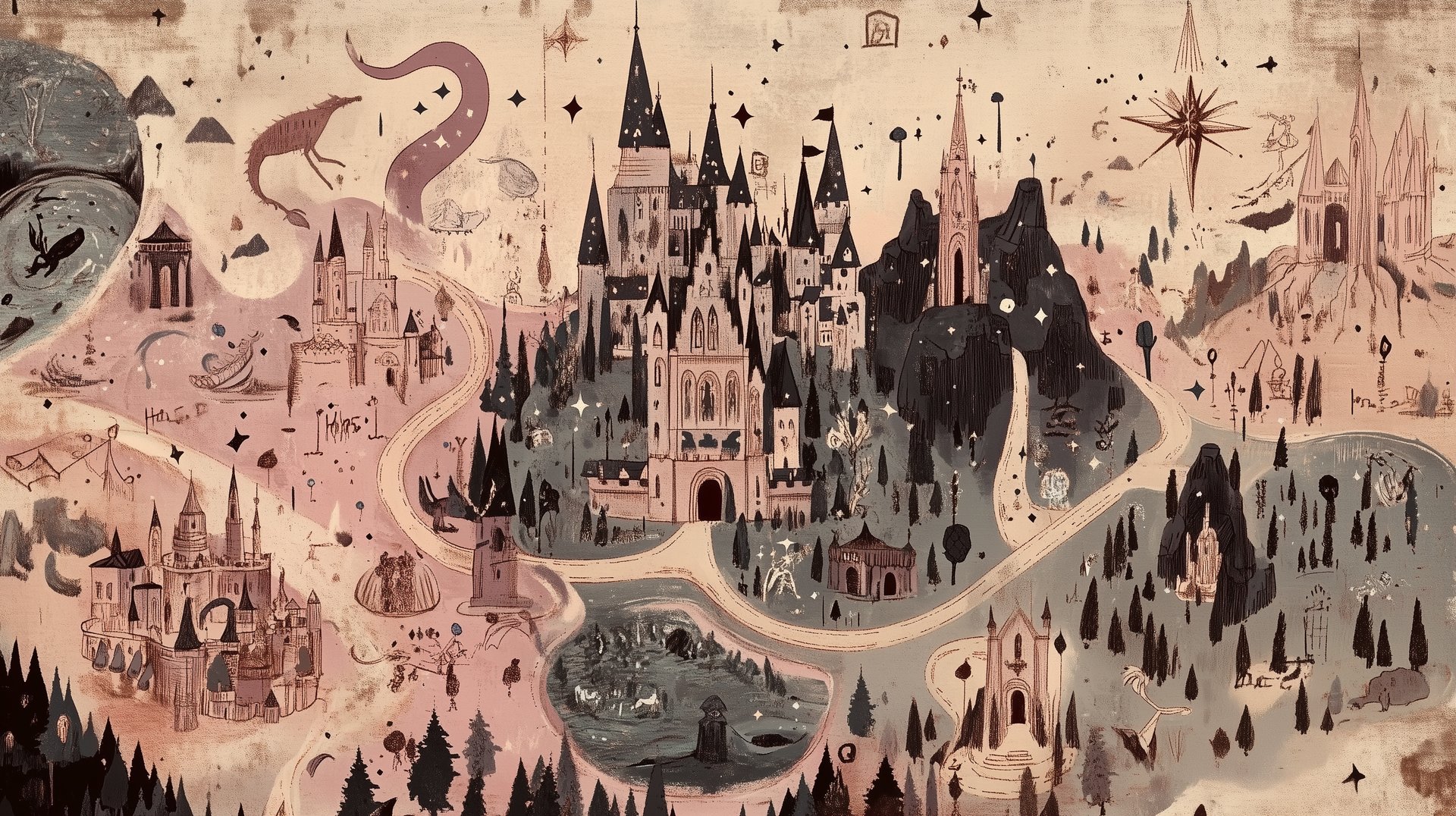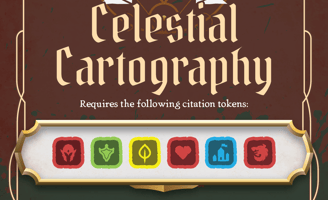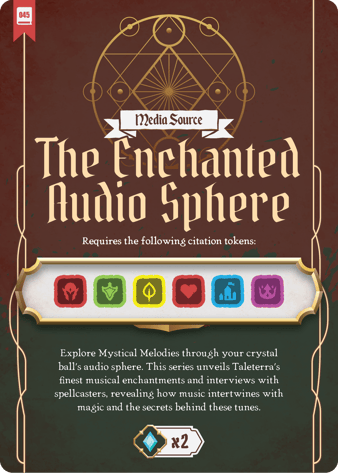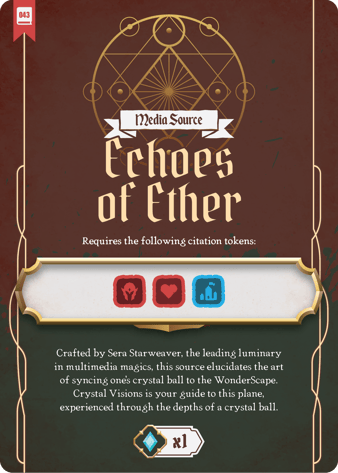
Audio, Video and Other Media
In the hallowed halls of the Grand Archive, knowledge takes many forms—etched in ancient tomes, whispered through enchanted frequencies, and woven into melodies that transcend time. Here, we present a curated collection of audio chronicles, celestial projections, and oracle broadcasts, each a gateway to forgotten lore and mystical revelations. Whether you seek arcane lectures from ethereal academies, soul-stirring bardic harmonies, or lost prophecies captured in voice and vision, you will find them recorded within this ever-expanding compendium. Venture forth, scholar of the unknown, and let these sonic sagas and spectral reels guide you through the shimmering veil of knowledge. But beware—some secrets are not meant for mortal ears…
Unlike traditional books and journal articles, media sources often require special citation elements, including:
Producers, composers, or narrators instead of authors.
Broadcast or release dates instead of traditional publication years.
Formats and mediums such as celestial projection (film), mystic canticles (music album), or oracle’s broadcast (radio).
Access links or retrieval dates, particularly for sources housed in magical repositories.
Below, you will find examples of various media references, cited in different styles to illustrate their variance in academic writing.
Podcast Episode
Podcasts, much like whispered legends from elder bards, are spoken accounts of expertise, discussion, or storytelling. They require the speaker’s name, episode title, and access details.
Example (Harvard Style): Whisperwind, E. (1123). Echoes of Enchantment: The Lost Art of Spell-Singing. Eldertome Archives. Available at: https://eldertome.echo/spell-singing [Accessed Moonrise 14, 1124].
Film
Films and visual media serve as narrative artefacts, transporting viewers through vivid storytelling and visual artistry. Citations must include the director or producer, release year, and the production studio.
Example (APA 7th Edition): Starweaver, V. (1502). The Last Lantern of Lunaria [Celestial Projection]. Arcane Reelworks.
YouTube Video
Platforms such as YouTube host countless instructional scrolls and visual demonstrations. These citations must include the content creator, year of publication, platform, and retrieval details.
Example (MLA): Lyric, S. Runes & Rhythm: The Secret Language of Spellcraft. Grand Archive of Etherea, Year 1287, https://archive.etherea/runes-and-rhythm. Accessed Dawnveil 3, 1288.
TED Talk (Council of Sages Symposium)
Whether recorded from the Council of Sages Symposium or delivered by a wandering oracle, referencing a lecture requires the speaker’s name, title, and hosting organisation.
Example (Chicago Style): Moonwhisper, C. 1420. The Psychology of Prophecy: How Visions Shape Fate. Oracular Lecture at the Grand Symposium of Sages. https://councilofsages.net/visionshape.
Music Album
Music and bardic collections serve as both cultural reflections and historical archives. These sources require the composer or bard, title, medium, and label.
Example (Vancouver Style): Nightingale V. Ballads of the Eldermoon [Mystic Canticles]. Starlit Sonata Records; 1356.
Interview Recording
Interviews offer first-hand insights from wise elders, historians, and mythical beings. Citations must include the names of both the interviewer and interviewee, the medium, and the date.
Example (IEEE Style): I. Stormweaver and E. Thornroot, Tales from the Twilight Grove: Voices of the Ancient Woods. Fablewood Broadcasting, Year 1605.
Documentaries
Scholarly documentaries, much like scrying visions, unveil hidden knowledge through moving images. These citations must include the producer, title, and network or production studio.
Example (Turabian Style): Aetherborn, L., producer. Arcane Inventions: The Golem Renaissance. Etherwave Studios, Year 1709.
Radio Broadcast
Much like messages carried by astral winds, radio broadcasts require the speaker’s name, date, and station for proper citation.
Example (APA 6th Edition): Duskwhisper, A. (1483, Moonphase 4). The Ethics of Necromancy: Raising More Than Questions [Oracle’s Broadcast]. Astral Frequency Network.
Audiobook
Audiobooks are essential for scholars who seek to absorb knowledge beyond mere text, often narrated by archivists and lorekeepers. These require the author, title, format, and publisher.
Example (Harvard Style): Hallowquill, P. (1523). Tomes of Twilight: A Bard’s Guide to Storywoven Spells [Echo-Book]. Lorekeepers Guild.
Online Course Lecture
Online lectures provide spellbound wisdom from arcane scholars, requiring the instructor’s name, course title, and institution.
Example (Chicago Style): Mistbourne, E. Alchemy & Aesthetics: The Beauty of Transmutation. Sorcerer’s Summit Lecture, Academy of the Seven Towers, 1457. https://seven-towers.academy/alchemy.
While media sources may seem more fleeting than books or scrolls, their wisdom is equally valuable. By properly citing bardic ballads, prophetic lectures, and etherwave visions, scholars ensure that future generations of enchanters and seekers may continue to unravel the mysteries of the arcane. Whether you speak the words aloud, gaze upon their spectral form, or listen to echoes of long-forgotten wisdom, each source must be documented with care and precision. The Grand Archive stands ever vigilant, preserving knowledge for those brave enough to seek it.







